Bringing Layered Information to Pilots' Eyes
While visions of high-tech fighter pilots are splashing across movie screens this summer, the state of digital helmet systems in real life almost seem like a Hollywood creation, given the level of advanced capabilities. A helmet vision system in development for several years for helicopter pilots—which is a cousin of the sophisticated F-35 Joint Strike Fighter helmet system—is delving into new capabilities with a dual eye, visor-projected display that is binocular and full color. It allows helicopter pilots to see a terrain grid with data points overlaid on the real world, combining data streams not integrated before. Called X-Sight HMD, Elbit Systems of America’s helmet vision system evolved from their helmet for pilots of the F-35 Joint Strike Fighter.
“This is based on the F-35 helmet technology,” explained Matthew Boyer, senior staff engineer, Elbit Systems of America (Elbit America). “This is another jump forward in some respects, in that the X-Sight was designed by for the rotary wing market and there are different requirements. In the fixed-wing market, you are never going to land in a very small area where you could possibly hit objects. And the hazards a helicopter pilot encounters, like brownout conditions, where the rotors blow up all that dust and they lose visual acuity, it leads you down a different road in terms of a solution.”
The company presented the X-Sight HMD helmet solution and its related avionics sensor system called Xplore to reporters at St. Mary’s County Regional Airport on June 10, which included a flight aboard the company’s helicopter test bed to see the technology in operation.
Elbit America is headquartered in Fort Worth, Texas, with 20 locations in the United States, including 10 manufacturing sites.
The state of helmet and visor capabilities infused with digital solutions has been advancing, over the years. Even seen in automobiles 25 or so years ago, an eye-cueing or heads up display technology shows simple data points such as speed or fuel levels. Nowadays, companies are pushing the edge of what is possible to display even further. For fighter pilots training at Mach speeds, Red 6’s synthetic air combat training system ATARS—introduced several years ago—brought a digitally simulated universe into the skies during high-speed maneuvering, giving pilots a way to train in dog fighting against a digital opponent while in the air, through a helmet visor application. Elbit America’s corded helmet offering, meanwhile, brings layers of key data in flight right to a helicopter pilot’s eyes, allowing them to fly and land in preciously unflyable conditions.
Legacy helmet/visor systems, such as the helmet mounted tracking system, or HDTS, used by the U.S. Navy and made by Elbit —with related Air Force and Army versions—is a monocle system integrated into a standard helicopter helmet. It accommodates night vision, with a rear eyepiece that feeds data in. But since that system is a monocle—just for one eye – training considerations and headaches can be an issue for naval pilots, Boyer said. In comparison, the X-Sight has a full visor with two projectors that display data, providing key flight, terrain and hazard information before both of the helicopter pilot’s eyes, at a natural depth perception.
“On the [Army's] Apache [AH-64 helicopter] right now, they have a monocle display that is 40 x 30 degrees [of view] and it is monochrome,” he shared. “And a lot of the other displays are very close to the eye and cause eye strain on the operator. The X-Sight is a projected display so that it is removed from the eye. It is like having a little movie screen in front of you and the projectors are showing you all of the augmented reality graphics on top of real-world views.”
With the X-Sight’s dual eye display, helicopter pilots have a 61 x 30-degree view, and the color display is in high resolution (in terms of pixels). In addition, it already incorporates a night vision feature that pilots can switch on or off—a key safety feature. “On the Apache, if they have a sensor failure, they have to take off the monocle and then they have to go grab their night vision googles and put it those on,” Boyer said. “And they have lost aircraft and crew when that has happened.”
Moreover, the system incorporates RADAR, distributed aperture sensors, visible sensors, FLIR cameras, LIDAR, other sensors and terrain data into an avionics system that fuses the data presented from the various sensors in a seamless, easy to see and use fashion. For example, information from the Digital Terrain Elevation Data, or DTED, database is integrated with real-time RADAR information, allowing the system to correct any errors or missing terrain data points from the global DTED database.
“We can pretty much pipe whatever information we want to put in the system – Link-16 track data, blue force tracker,” explained Gregory Byers, senior director, U.S. Navy and U.S. Marine Corps Fixed Wing Customer Relations, Elbit America. “Whatever is resident on the aircraft’s data bus we can pump into there.”
The bevy of sensors that can be applied to the system can be easily changed for different configurations, allowing data feeds based on mission need. “The ultimate goal, end state would be to have that be pilot selectable,” Byers said.
“At a basic level, just with our display and processing, there is a lot of functionality that you can get, and when you add on sensors, such as a distributed aperture sensor, now you have the external vision that you can see at night, and you don’t have to wear night vision goggles, you have cameras and it is all presented to you in the display fused with all of that symbology. Then you can layer on additional sensors like LIDAR and RADAR, and you are actually informed actively on obstacles that are in your landing zone or terrain data,” Boyer offered.
In addition, the Xplore system that the helmet connects to has the ability to select a specific landing zone across line of sight and designates it. And even though the helicopter may encounter dust or a brownout, visual impairment, the system enables the pilot to view the landing zone anyway, by melding sensor and historical data.
“LIDAR doesn’t see through dust, but as you are flying in you can take a LIDAR picture and have a 3D representation of what the actual landing zone is and as you are going into the brownout, you can pipe in that historical data so you can see,” Byers noted.
Because the system allows for the integrated of multiple data feeds, lower quality datasets can be enhanced by real time data from other sensors, allowing helicopter pilots to have more accurate information during flight operations.
“DTED is a global database, but it can have errors in it,” Boyer stated. “But more importantly, it is only terrain. Trees, houses, poles, anything that you think of as cultural data, none of that is resident in that database. So when you want to have a full holistic solution, you need those active sensors like RADAR and LIDAR to collect that information beyond just that terrain data.”
In terms of requirements or feedback from the Army, Boyer noted the service’s mantra, ‘Heads up, eyes out.’ The X-Sight, he attested, meets those stipulations, allowing pilots to have more situational awareness, with their eyes up. “The full color is a big deal,” he stated. “There is a lot more you can do from a cueing, situational awareness perspective with full color. Ten years ago, it was impossible to create a full color display that would meet the requirements, so these are evolutionary capabilities for the helicopter market.”
Last summer, the company ran a demonstration with the Army between June 7-August 5, 2021, which included the Army’s successful integration of the system on its Apache AH-64E versions. A total of 17 helicopter pilots flew with the X-Sight HMD system for 30 flight hours across 23 flights. In addition, during the demonstration, about 200 30-milimeter rounds were fired using the helmet system, Boyer said.
The X-Sight system will also support future long-range assault aircraft under the Army’s Future Vertical Lift applications, the engineers said.
Elbit America is also reaching out to potential Navy and Marine Corps helicopter customers.
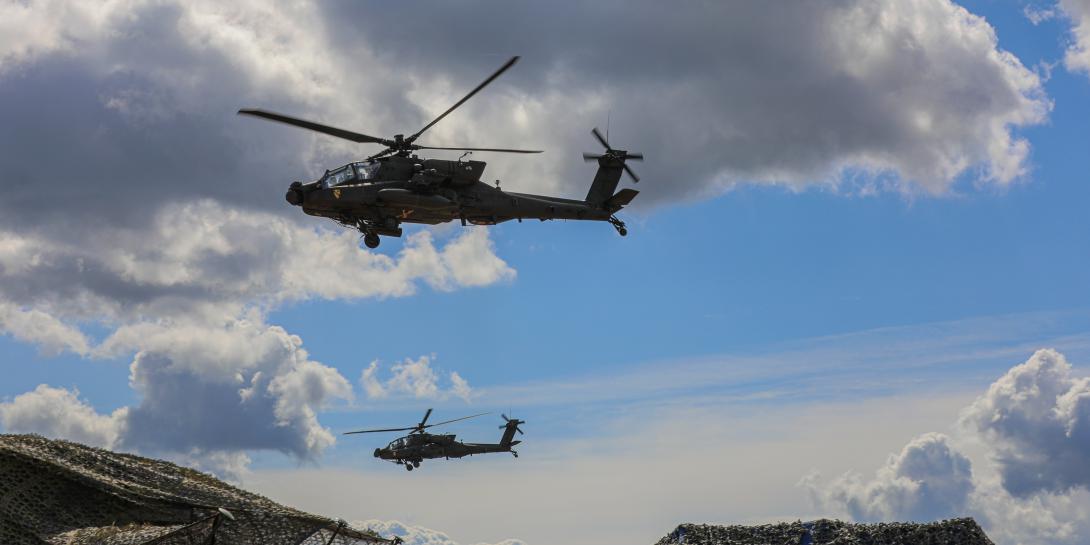
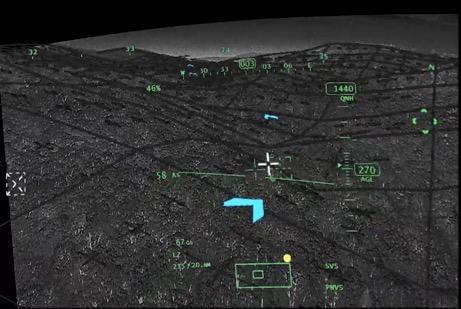
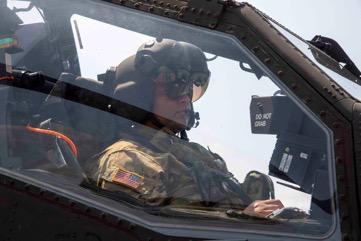

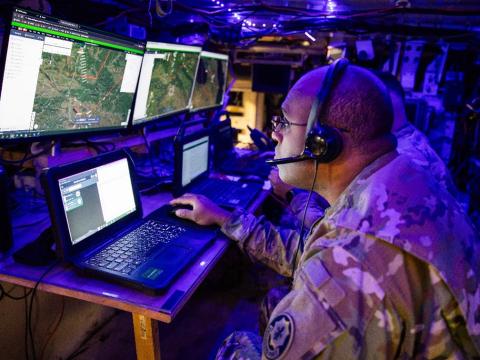

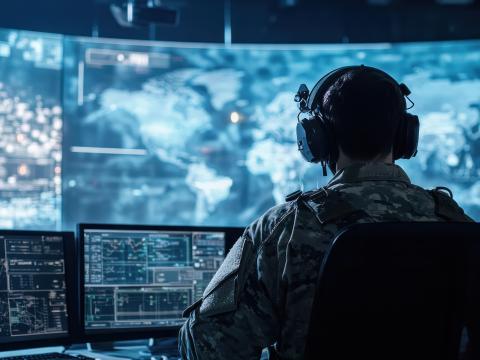
Comments